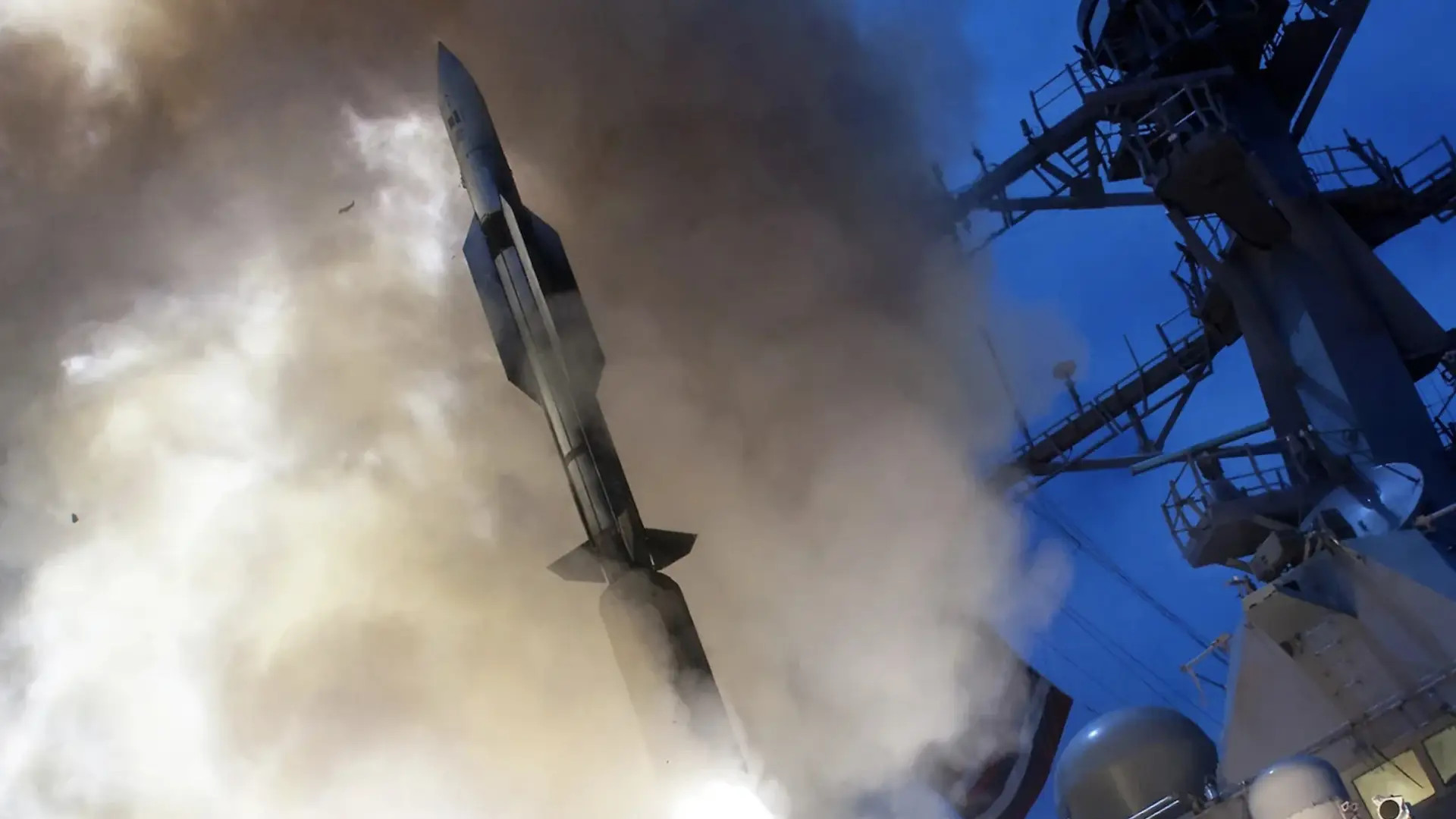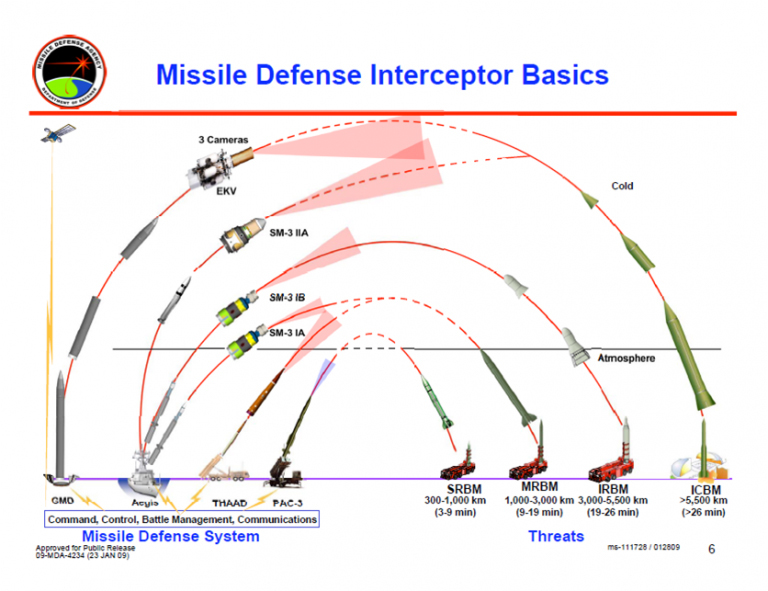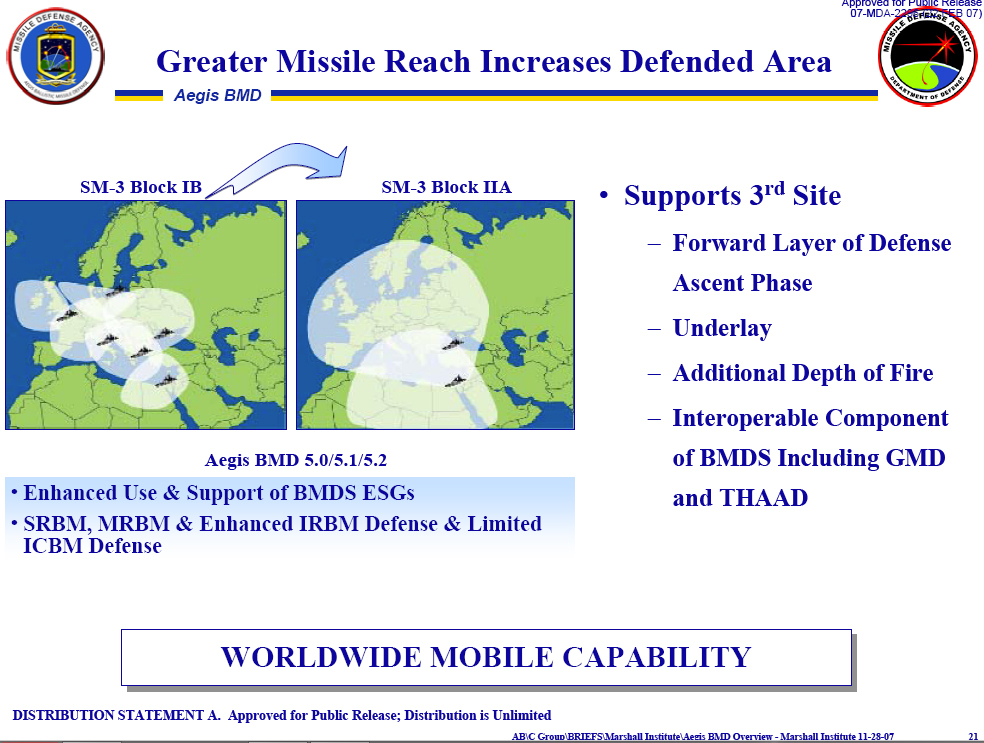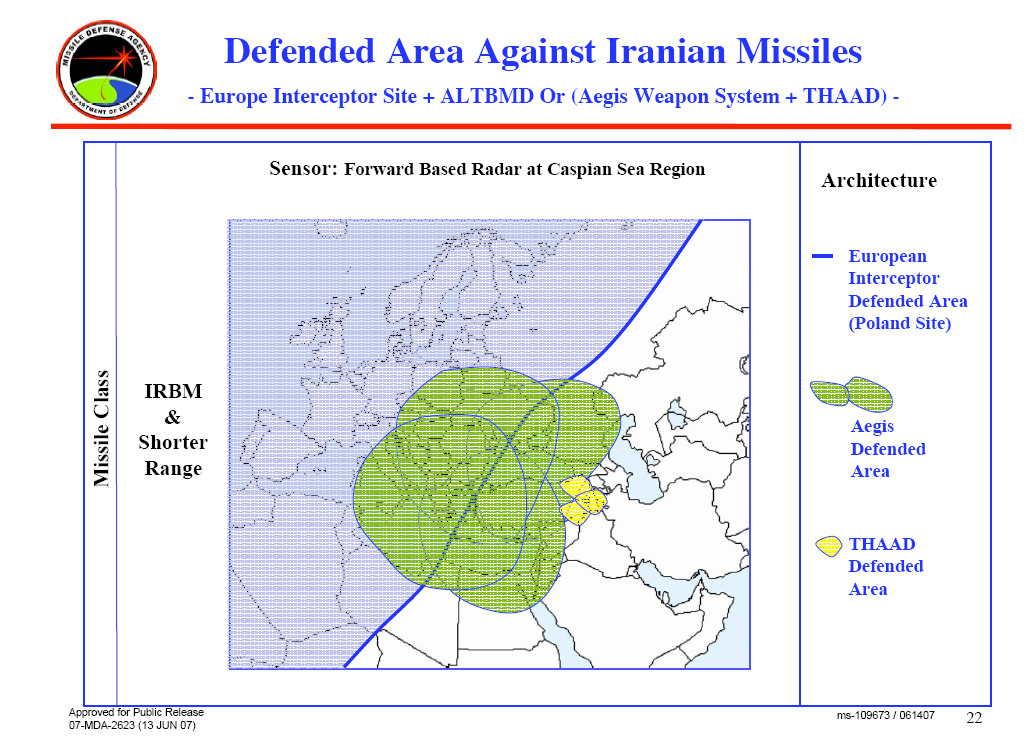A pair of U.S. Navy Arleigh Burke class destroyers in the Eastern Mediterranean Sea were reportedly among the assets employed to shoot down Iranian missiles and drones headed toward Israel last night. There are strong signs these ships may have fired Standard Missile-3 (SM-3) anti-missile interceptors in the course of those operations, which would mark the first use of those weapons against real incoming threats.
The War Zone was the first outlet to raise the possibility that SM-3s had made their combat debut last night. Readers can first get up to speed on Iran’s unprecedented overnight strikes from our earlier rolling coverage here.
The Israel Defense Force (IDF) says a total of 350 Iranian missiles and drones were launched at Israel overnight and that their warheads contained a combined total of 60 tons of explosives. The IDF had said earlier that Iran’s aerial onslaught included approximately 120 ballistic missiles, 30 cruise missiles, and 170 drones fired at targets in Israel last night and that 99 percent of them were shot down, the vast majority before they even entered Israeli airspace. Multiple reports citing unnamed Israeli officials say that these figures include launches from sites in Iraq and Yemen, as well as Iran itself. It is unclear whether Iranian personnel in Iraq and Yemen or Iranian-backed proxy forces were responsible for the launches outside of Iran.
Of those incoming threats, “the U.S. Navy shot down at least three ballistic missiles using the Aegis missile defense system aboard two guided-missiles destroyers in the eastern Mediterranean,” according to a report from CNN. The Arleigh Burke class USS Carney knocked down at least three ballistic missiles itself, while the USS Arleigh Burke destroyed at least one more, according to Fox News’ Jennifer Griffin. This would make for a total of four. The exact number will likely come into focus in the days and hours ahead and The War Zone has also reached out for more information, including about whether SM-3 interceptors were employed.
The U.S. Aegis Ballistic Missile Defense System (BMD), which is managed by the Missile Defense Agency (MDA) in partnership with the Navy, consists of multiple elements at sea and ashore. This includes dozens of Arleigh Burke class destroyers, as well as a steadily shrinking number of Ticonderoga class cruisers, specially configured to support the Aegis BMD mission. There are also fixed Aegis Ashore facilities in Romania and Poland (as well as a third site used for testing in Hawaii).
Currently, the primary anti-missile interceptors used in the Aegis BMD system are variants of SM-3 and SM-6. The SM-6 is capable of engaging ballistic missiles, as well as novel hypersonic threats, in their terminal phases of flight, although the envelope to do so is quite limited in geographical size. That missile is also a multi-purpose weapon that can be employed against a range of other aerial targets, as well as ones on the surface of the ocean and land. The SM-6 reportedly made its combat debut relatively recently as part of operations in and around the Red Sea to protect commercial shipping, as well as friendly warships, against ballistic and cruise missiles and drones launched by Iranian-backed Houthi militants in Yemen.

SM-3 series interceptors, on the other hand, are capable of engaging ballistic missiles, including intercontinental ballistic missiles (ICBM), outside of the Earth’s atmosphere during the mid-course portion of their flight. SM-3s are hit-to-kill weapons that release a “kill vehicle” in the final stages of an intercept that then physically smashes into the target. SM-3s have demonstrated their capabilities against various tiers of ballistic missiles in testing and one was also used to destroy an out-of-control U.S. spy satellite in 2008.

SM-3s are not known to have previously been employed against actual hostile threats, but have been in testing for decades. The first combat use of the SM-3 would be an absolutely massive milestone for the SM-3 program that has faced a long and very challenging, as well as at times controversial, development.
Being a midcourse interceptor, the SM-3 can defend a much larger area against more advanced ballistic missiles than its SM-6 counterpart, which, as noted earlier, engages the threat in its terminal phase, near its final target, as it careens down through the atmosphere.


Exactly what kinds of ballistic missiles Iran fired at Israel remains unclear. Pictures that have emerged showing portions of those missiles that were shot down or otherwise failed to reach their targets suggested that Emad medium-range ballistic missiles (MRBM) were among the types employed.
Video footage the Iranians have now released shows what may be examples of the new Kheiber Shekan (also sometimes written Kheybar Shekan) or Dezfuls, both of which are MBRMs, being employed. Older Ghadr-110 MRBMs are also seen being fired in the footage. Iran publicly used the Kheiber Shekan for the first time in strikes on targets in northwestern Syria in January.
The Navy’s Arleigh Burke class destroyers could have employed SM-6 missiles against Iranian ballistic missiles headed toward targets in Israel last night. However, as already noted, SM-6 is designed to engage ballistic threats in the terminal phase, which would have limited the engagement envelope against any such Iranian missiles heading over Israel, but it is still possible.
There are other signs that the SM-3 may have been employed. Multiple videos emerged last night showing what appeared to be exoatmospheric intercepts over Israel, with plumes visible that could be from kill vehicles separating from the rest of an interceptor or the actual impact of the kill vehicle with the targeted missile.
It is important to remember that Israel’s own Arrow 3 anti-ballistic missile interceptors are also capable of engaging threats outside of the Earth’s atmosphere and use kinetic kill vehicles to destroy their targets. Arrow 3s, as well as lower-tier Arrow 2s, were among the air defense assets the IDF employed last night. Israel has a very extensive, multi-layered integrated air and missile defense network with other systems that have various degrees of terminal counter-ballistic missile capability. This includes David’s Sling with its Stunner interceptors and U.S.-made Patriot surface-to-air missile systems.
It is possible, if not outright likely at this point, that both SM-3s and Arrow 3s were employed overnight.
Regardless, Iran’s strikes last night are exactly the scenario that the Aegis BMD system was designed to counter. In particular, medium-range ballistic missile strikes, specifically regarding Iran and other rogue-like states. The U.S. military also has other air and missile defense assets, including an AN/TPY-2 radar site in Israel and another one in Turkey, specifically in place to watch for and, if necessary, help intercept incoming threats from Iran.

Israel’s Iron Dome defense systems, as well as its combat jets, were also heavily engaged in intercepting incoming cruise missiles and drones. Video the IDF has now released shows what look to be Soumar land-attack cruise missiles and Shahed-136 kamikaze drones, or variants or derivative thereof, being knocked down.
U.S. Navy Arleigh Burke class destroyers, as well as American combat jets and ground-based air defenses (which could include Patriot and Terminal High Altitude Area Defense systems) in the region, also downed non-ballistic Iranian threats headed toward Israel. U.S. Air Force F-15E Strike Eagles were especially heavily engaged, according to a senior U.S. official. There are claims circulating that these jets shot down dozens of drones and cruise missiles, acting as a counter-air screen between Iran and Israel, as the weapons made their way across Iran and into Syrian and Jordanian airspace.
“This morning, President Biden spoke with members of the 494th and 335th Fighter Squadrons to commend them for their exceptional airmanship and skill in defending Israel from an unprecedented aerial attack by Iran,” according to a White House press release. The 494th Fighter Squadron based at RAF Lakenheath in the United Kingdom and the 335th Fighter Squadron out of Seymour Johnson Air Force Base in North Carolina are both F-15E units.
U.S. Navy aircraft, as well as British and Jordanian fighters, also helped destroy missiles and drones launched by Iran. French forces also supported the defensive operations, but it is currently unclear if they were responsible for any shootdowns.
Some of Iran’s missiles also appear to have failed after launch.
A handful of ballistic missiles were the only Iranian threats to make it to their targets, according to the IDF, which said those weapons caused minimal damage to Nevatim Air Base. Nevatim, which sits in the Negev Desert in the southern end of the country, is home to the country’s F-35I Adir stealth fighters, among other types.
Pictures the IDF has now released, seen below, show various impact craters.
Low-resolution satellite imagery that has now emerged that indicates a number of buildings at Nevatim, as well as a taxiway, may have sustained some damage from the Iranian strikes.
The IDF says the base remains operational and had pointedly released pictures and video last night showing activity there even as Iran’s strikes unfolded.
At the time of writing, a young girl who was reportedly left in life-threatening condition by shrapnel from the dribs caused by an intercepted Iranian missile looks to be the most serious casualty to have occurred in the course of Iran’s strikes on Israel. Dozens of other Israelis were reportedly been treated for more minor injuries or stress and anxiety-related issues.
Overall, in addition to the potential first combat use of the SM-3, Iran’s actions overnight look to have given a loose coalition of countries significant real-world experience in defending against large-scale missile and drone strikes and a major intelligence windfall about the actual capabilities the regime in Tehran possesses. This all further underscores the value of years of effort on the part of the U.S. military to better integrate air and missile defense capabilities across the region.
The biggest question now remains how Israel will respond to Iran’s unprecedented actions. The IDF says it has already struck targets in Lebanon in response to rockets that Iranian-backed Hezbollah militants also launched last night. Footage of those strikes is seen below.
However, a larger Israeli response aimed at Iran is expected. Israel’s War Cabinet met earlier today to discuss its options.
“We were attacked last night from four corners of the Middle East with proxies shooting at us, firing ballistic missiles, drones, and cruise missiles,” Israel’s President Isaac Herzog said in an interview with Sky News. “This is like a real war. I mean, this is a declaration of war.”
Herzog added that Israel sought peace with its neighbors and its response would be exercised with restraint.
Minister-without-Portfolio Benny Gantz, a senior member of the country’s War Cabinet, has also vowed that Israel will “build a regional coalition” to confront Iran and the country will “exact a price” from the Islamic Republic at a time and place of its choosing.
U.S. President Joe Biden reportedly told his Israeli counterpart Prime Minister Benjamin Netanyahu during a call last night that the U.S. military would not assist in any direct retaliation against Iran. “You got a win. Take the win,” Biden said, according to Axios. As we posited before the attack occurred, if air defenses performed very well, calling it a win and moving on was a real option, one in which Biden appears to be pushing now.
In the meantime, the IDF’s Homefront Command has announced a variety of guidelines for Israeli citizens that will be in place at least through Monday. This includes limits on the allowable size of public gatherings in certain areas of the country.
For its part, Iran has threatened to respond to any direct strikes from Israel in kind and has also pledged to target any country that assists in such an operation. Last night, Iran’s Permanent Mission to the United Nations said that it would consider the “matter concluded” if Israel did not retaliate.
The governments of the United States and many other countries have condemned the strikes on Israel, but have also called for steps to de-escalation.
Overall, the risk of further escalation, which could potentially touch off a major regional conflict, remains extremely high as the world waits to see what form Israel’s response will take.
Contact the author: joe@twz.com
